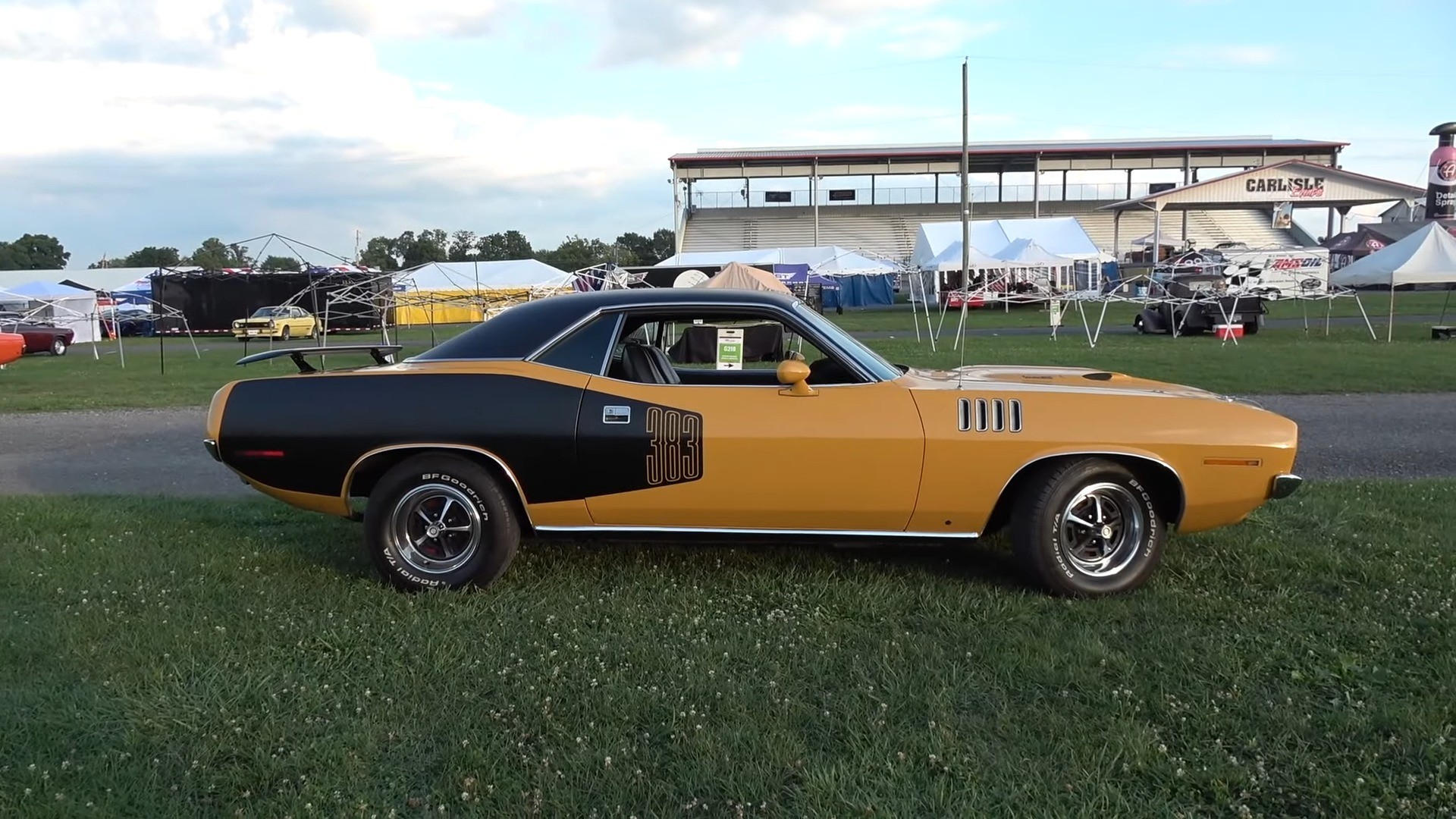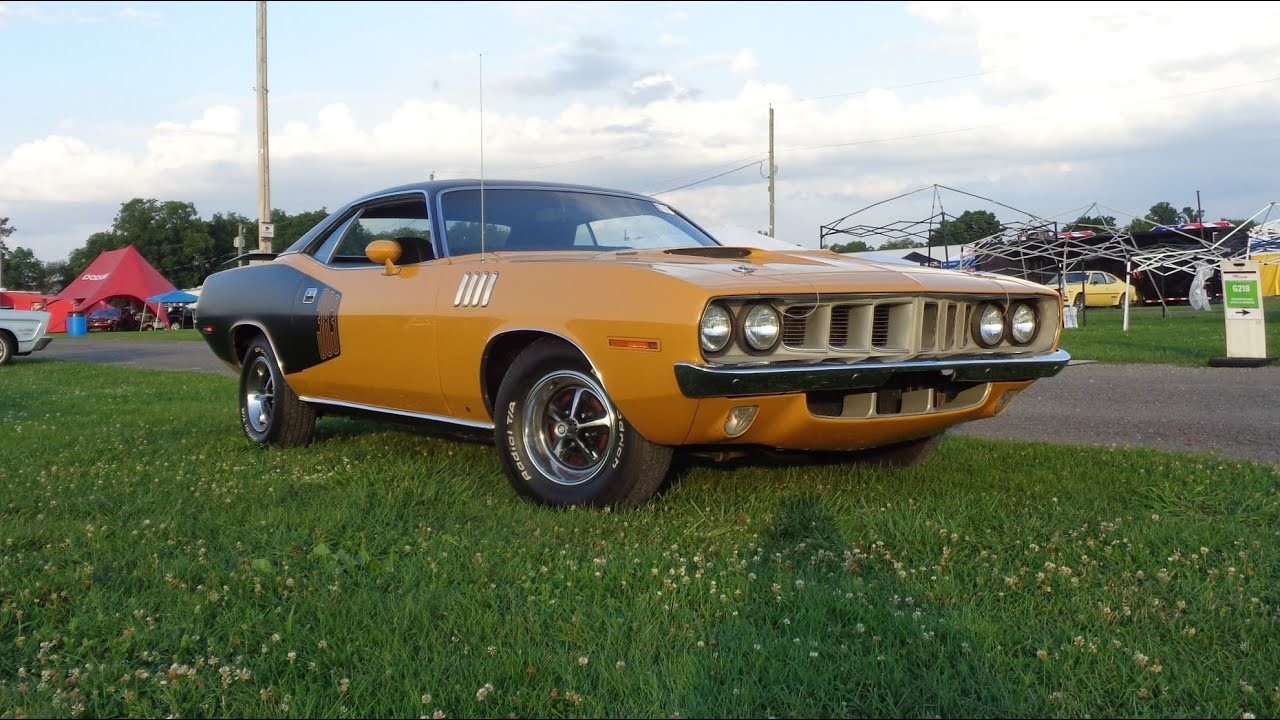How many car enthusiasts can say they grew up in the car they are currently driving? Probably less than the eight fingers available on every Homo Sapiens individual on Planet Piston. Here is one of those piston addicts: a wrench-turning wife and mother with one of Mother Mopar’s most beloved V8 children.
1971 Plymouth ‘Cuda 383 four-barrel with a three-speed automatic, and its lady owner Tanya, who inherited the car from her mother in 2011. This passing bears a special significance for the woman: she and her mother had attended the Carlisle car show since Tanya was a little girl 28 years ago.
This nostalgic story is centered around one of Detroit’s undeservingly less-famed muscle cars. The Plymouth Barracuda should be credited for establishing the pony car segment for which the Mustang gets all the laurels.

It is a matter of semantics: the Mustang-pony association makes all the sense in the world, even if – mechanically and chronologically– the Barracuda came first. The compact A-body automobile was launched on April 1, 1964, two weeks before Ford’s megastar.
Nonetheless, it is the latter who took the headlines of history chronicles, and it makes sense from a symbolic, metaphoric perspective. The human race relied on horses to conquer the world. A fish car sounds far less muscular, vibrant, wild, and fundamentally untamed than a voracious fish out of the water.
But the Plymouth didn’t back down and surrendered unconditionally to the automotive horsing around of the muscle car era. Instead, it got better: in 1970, Mopar grafted the nameplate on the then-new E platform, dedicated to the Chrysler twins: the Barracuda and the Challenger.
Although the two cars look nearly identical from afar, they share no parts. They did share the go-fast elements: engines, transmissions, rear ends, suspensions – all the tire-smoking magic-making bits. Naturally, the big guns got the limelight – the 426 HEMI and the 440 were the mythical demigods of the Trojan horsepower wars.

The unsung heroes came in plain clothes, albeit they packed a respectable punch. We’re talking about the other big-block from Chrysler, the reliable and long-running 383 cubic-inch V8 (6.3-liter). This is the plant under the hood of this story’s metal hero – a four-barrel high-power variant of the trusty engine.
The low-profile big-block was Tanya’s trusty chorus for decades, and the sound of a Plymouth ‘Cuda engine is a sublime poem to this Muscle Car Girl. It’s like hearing a baby’s first heartbeat at the ultrasound pregnancy check – and there is no greater compliment for Mother Mopar than this metaphor.
If we pay close attention to her car – featured by the classic car hunter and vlogger Lou Costabile – we’ll notice a discrepancy under that performance hood’s blow holes. The nitpicking purists will immediately cut into the conversation and point at the “383 Magnum” air cleaner pie tin. The `Magnum` designation belongs to Dodge, just like the double snorkel, which was the Challenger’s 383 CID standard. Plymouth had the `383 Super Commando` title of nobility written on a single-snorkel air filter cover.
The ’71 ‘Cuda is easily distinguished from its third-generation siblings by the quad headlights and cheese grater grille. Another distinctive marker for the 1971 model year only is the set of quadruple vents on the front fenders – the unmistakable `shark gills.` Optionally, the billboards would shout the car’s performance specs out loud – in our case, the 383 decals behind the doors leave no room for error.

The 383 V8 was a good puncher but didn’t drain the wallet with insatiable fuel thirst, like the range-topping torque monsters 426 and 440. Rated at 300 gross hp (305 PS) and 410 lb-ft (556 Nm) in 1971, the engine was already beginning to feel the looming claws of the Malaise era slowly grasping performance and sending horsepower to the ‘emissions regulations’ slaughterhouse. The detuning lowered the compression to 8.5:1 from the 1970 9.5:1.
This mechanical write-off wiped 10% off the 383 4-V’s power output of 335 gross hp (340 PS). It was a significant loss for a car that offered the best of both worlds – economy, and performance – at a reasonable price. And that was just the beginning – the ‘Cuda and its low-profile relative, Barracuda, were retired at the end of 1974, ten years to the day after the model’s launch on April 1, 1964.
The ‘Cuda was the performance breed of the model, being entitled to carry Plymouth’s muscle V8s: Tanya’s car – which we can admire burbling in the video – has the standard ‘Cuda-only plant (with 96,000 miles’ worth of road life under its belt – just over 155,000 kilometers). But the nimble ocean-dwelling predator could also have come armed with the 340 four-barrel, the 440 and its triple dual-barrels, and, of course, the 426 HEMI.
One note about the video: the color of this two-tone 1971 Plymouth ‘Cuda is not Butter Scotch, but Bahama Yellow. The Butter Scotch was an optional extra hue for the Dodge Challenger; Plymouth fans also had to dig deeper in their pockets for the Bahama Yellow color.
